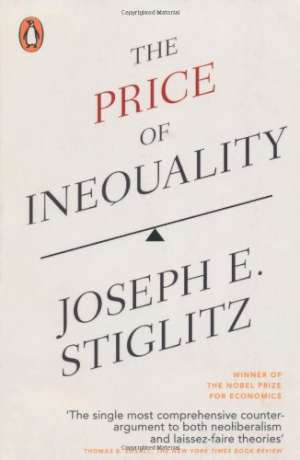01 May 2013
The Price of Inequality
Joseph Stiglitz
2012, Allen Lane, 448 pages, £25.00
ISBN 0718197380
Reviewer: Mark Cleary, Consultant Economist, Kinetic Economics

There is something rotten in the state of Denmark, or as Joseph Stiglitz puts it, America. Stiglitz tells us that 20% of Americans own 85% of America’s wealth. This is, as he points out, not a happy state of affairs.
This book portrays an America that has lost its way. The American dream of equal opportunity is just a mirage for the middle and lower parts of society and the equal opportunity that did exist in the recent past has been replaced by a corrupt and rotten institutionalisation of the wealthy’s self-interest.
Things are getting worse for the poor, according to Stiglitz, something which he illustrates clearly with a deluge of statistics. The main emphasis of the book is not about the poor, however, but the so-called ‘middle’, an idea which his American audience may find more palatable. This group, and by implication those who are poor also, is discriminated against, time after time in favour of the very wealthy. Numbers abound in the first part of the book and Stiglitz frequently illustrates with a wide range of statistics how the poor and the middle have seen a systematic fall in their incomes while the wealthy have grown richer. This, he tells us, is due to the fact that the political system is rotten, a system which favours the rich and large corporations at the expense of the middle.
Politicians of course set the rules, and therefore the explanation for the current inequality in society identified here flows from them. The book’s argument is that the interests of these politicians deviates from the majority, that is middle America, and instead is aligned with the rich and large corporations. He pursues this argument by showing how the very wealthy and large corporations have gained control over political parties via the current funding mechanisms prevalent in America. This structure, regardless of the political party in office, leads to dysfunctional government as the rules, whether tax or other regulatory legislation, favour the wealthiest parts of American society.
Siglitz frequently refers to cases where such defects manifestly occur and he shows how the rich and powerful corporations are able to establish ‘economic rents’ from a variety of privileges that have been awarded to them via government. He also argues that this inequality is further institutionalised by discriminatory electoral laws, a media that is controlled and manipulated by the wealthy, and taxes that are often regressive rather than progressive.
The conclusions are clear, that although the majority are prepared to put up with a certain amount of inequality and under-representation, the current trend of a growing inequality in American society threatens the very fabric of the country.
The author begins the book with a discussion of the ‘Arab Spring’ and his recent experiences talking to the very people who participated in that revolution. The main thrust of this revolution was change, representation, economic advancement, ideals which Americans also need.
Stiglitz believes there can be only two possible conclusions to the current problem of inequality in America. The first is an ‘Arab Spring’, the second although perhaps equally unlikely source is that the elite wake up and smell the coffee, and change their ways to avoid the problems that a disenfranchised American society may bring.
